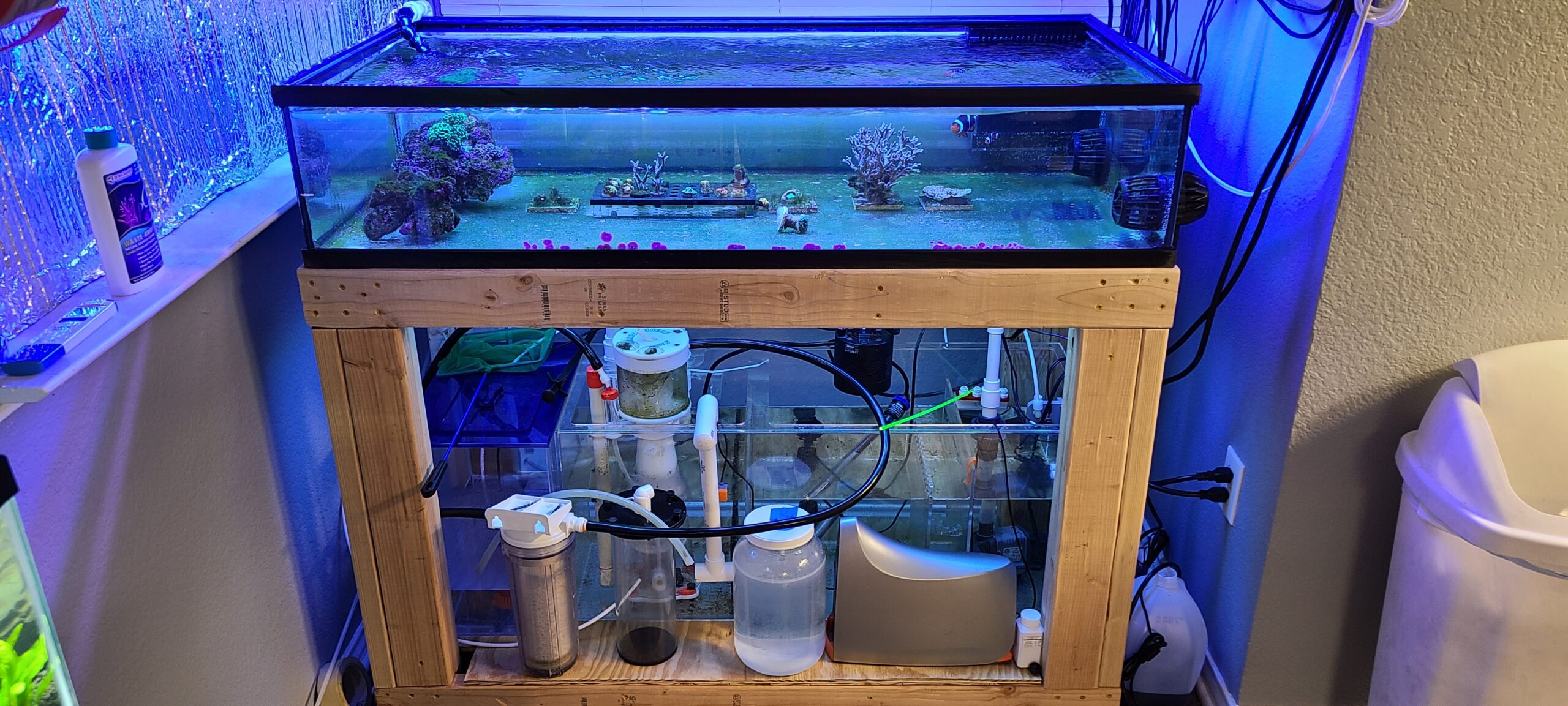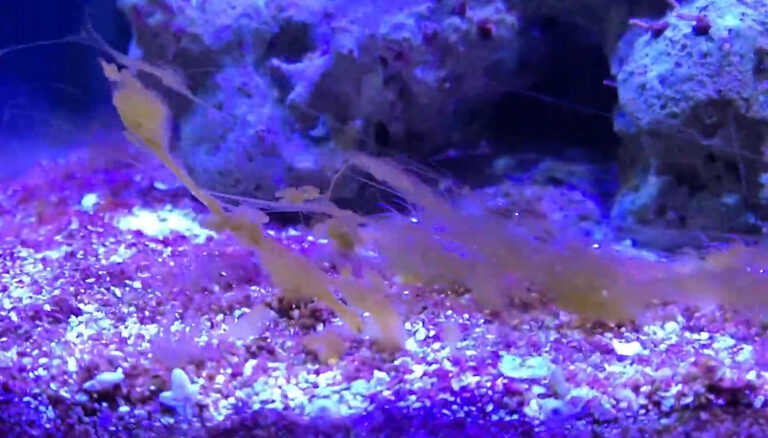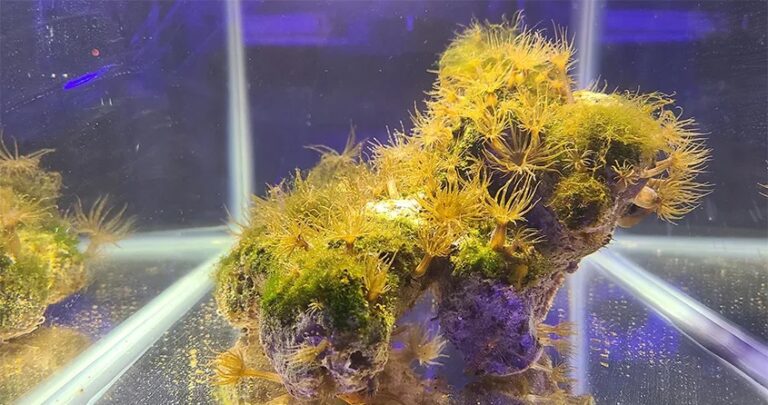How I recently beat Dinoflagellates
Table of Contents
I’m sure most of us have had a battle with dinoflagellates at least once or twice in our lives.. Each time it makes you stressed because you don’t want it to affect your corals. Everyone always says to keep your nutrients elevated, which I believe is true you should but it seems to make it worse before it gets better. I’ve done something different this time around with my battle with dinos.
The method I used
This is what I did step by step to rid my tank of dinoflagellates this time in under a month. If I would have started adding the last step I probably would have beat it sooner.
Lighting schedule
I recently switched from a single Radion XR30 G4 Pro on my 50-gallon lowboy frag tank to an old Coralife 4-bulb T5 fixture that I had years ago. I ran the T5s for 9 hours a day. Once I noticed the dinoflagellates I reduced the lighting schedule to just 4 hours a day. No blackouts. I’ve tried them in the past and they never worked for me.
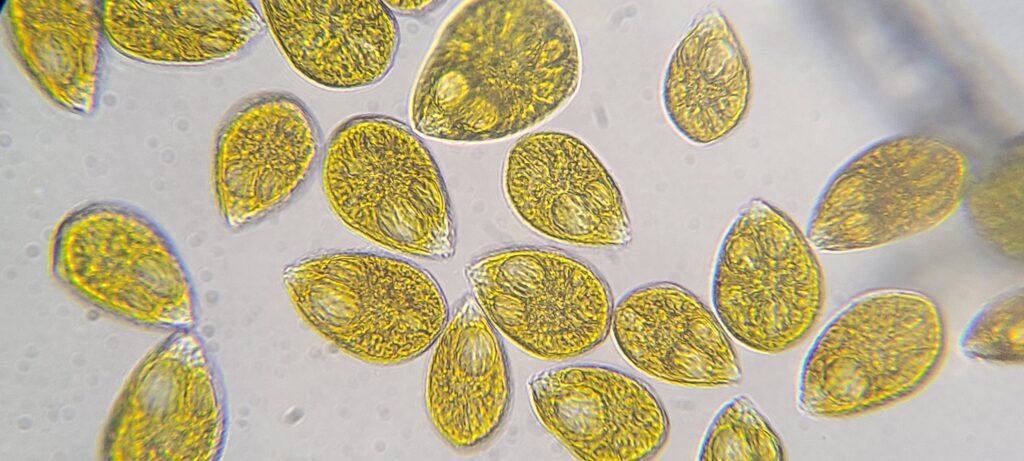
Manual removal of Dinoflagellates
A couple times a week I would take this filter material and cut it into squares the size of a kitchen sponge. Then, I would turn off all of the flow in my aquarium and wipe down all the sides and the bottom of my tank to capture the dinoflagellates in the sponge to remove them.
Filter Socks and Fishnet
Before I turned back on the flow I would add a clean filter sock to the sump to catch any loose dinos or algae. While the gunk was going into my overflow I would use my fishnet to capture the larger particles floating in the main tank to prevent them from clogging up the filter sock faster. About an hour later the tank was clear again.
Skimmer
While the tank is running like normal again I will also turn on my skimmer to collect any excess dinos that make it through the filter sock. I have a recirculating CO2 scrubber hooked up to my skimmer, I’m not sure if it makes a difference in fighting dinoflagellates. I just have it on there to keep my pH elevated to help the corals grow faster.
Elevated Nutrient Levels
Like the three other times I battled dinos I dosed po4 and no3 almost daily to keep my nutrients elevated. I aimed for 15-20 ppm of nitrates and .10 – .15 of phosphates. I purchased KH2PO4 and KNO3 from Green Leaf Aquariums and mixed up my own liquid formula to dose to my tank.
I tested daily at the same time for a month to get an idea of how much I needed to dose. In the end for my 75 gallon total water volume I needed to dose between 3-5 ml of NO3 and PO4 daily to keep my nutrients elevated.
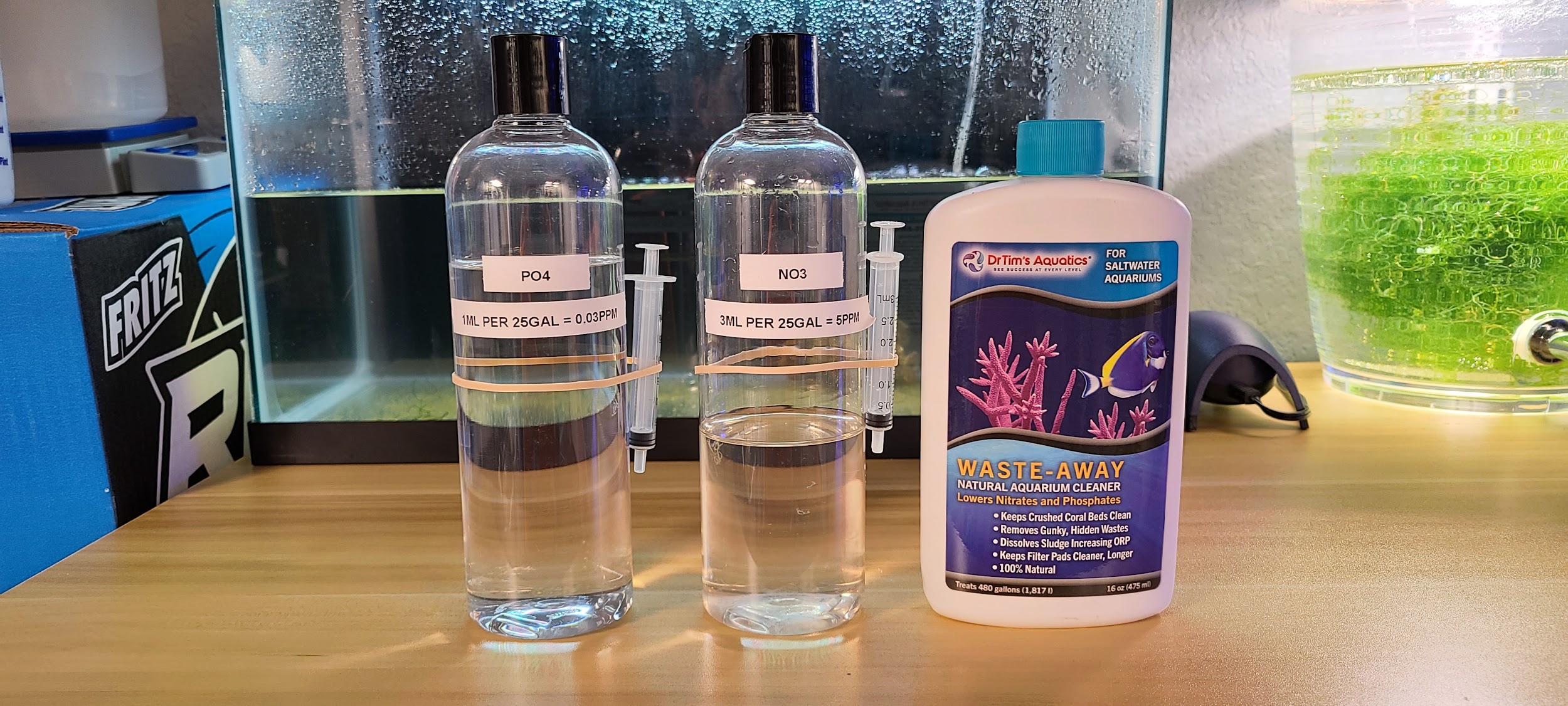
Bacteria
I recently saw someone on YouTube mention adding a specific bacteria to get rid of dinoflagellates . I don’t remember who or what bacteria they mentioned. I almost bought it off bulk reef supply until I remembered I still had Waste Away by Dr. Tim’s Aquatics. So I gave it a try. I added a capful daily. I turned off my skimmer for an hour afterwards so it would not pull it out.
After about 4 days of adding Waste Away to the tank I noticed that there were very minimal bubbles left and the dinos were gone from their usual places. I couldn’t believe it. I had been doing the same methods mentioned above for about a month straight with very little dinos disappearing. Once I started to add the bacteria *poof* the dinos were just about defeated.
What’s next?
I’ve noticed my nutrients not being consumed nearly as fast as they were when I could see an abundance of dinoflagellates in my tank. I believe this is due to there not being as many dinos left to consume the nutrients. I am going to continue testing NO3 and PO4 daily as well as adding Waste Away daily. I’m not changing anything for roughly 2 more weeks.
After the next two weeks are up I will stop testing daily and stop dosing Waste Away. I will slowly increase my lights over the next couple of months to 8 hours instead of 9. I want to add about 6 cups of live mud from Florida Pets to my fuge area to help with the bacteria biodiversity and create a more healthy microbiome. Lastly, later on down the road I plan to send off a Microbiome test from AquaBiomics to see where my tank stands compared to other reefers tanks.
Final Thoughts
Fighting Dinos can be intimidating for the first time and even scary the second time around because you know what is about to happen to your aquarium. There is plenty of advice and groups out there to help you win your battle. You may have to weed through the not so great advice to get to the actual methods that will help you.
Just have patience. The first time I battled dinos I struggled with it for two years until I beat it. Every tank is different, but if I can leave you with one piece of advice, it’s to keep your nutrients elevated and don’t let them drop to 0.


